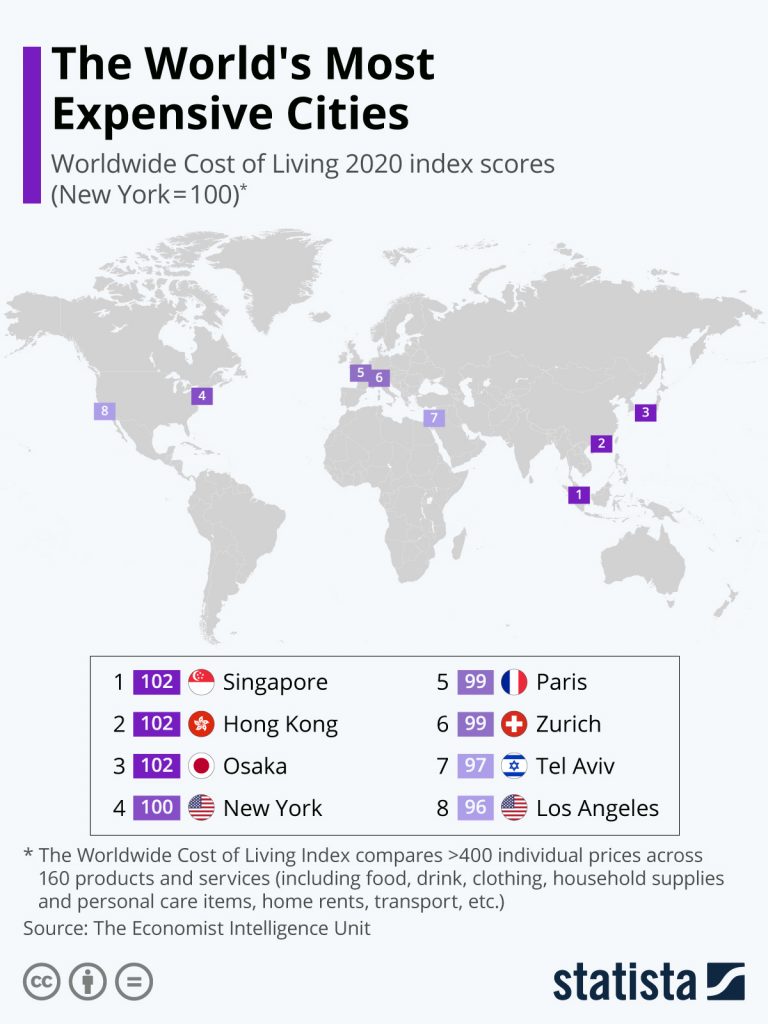Three cities share the title of being the most expensive city in the world. This is according to Worldwide Cost of Living 2020, a survey by The Economist Intelligence Unit (EIU) compiled last November 2019.
Which cities are these to be exact? Let’s see for ourselves.
Highlights
Cities were ranked based on their Worldwide Cost of Living (WCOL) Index scores. WCOL Index is a measure of a city’s cost of living formulated by the EIU.
Singapore, Hong Kong, and Osaka triple-tied in the first spot, with all of them obtaining a WCOL Index score of 102. Singapore and Hong Kong are both heavily boosted by their strong tourism industries. This, consequently, also increased their costs of living.
Meanwhile, the strengthening of the yen in the previous year propelled Tokyo from its previous rank of 13 in last year’s report to the top spot for this year. This kicked Paris out of the Top 3 spot.
New York is in fourth place with a score of 100. Formerly-top-three Paris is now tied with Zurich in fifth place, both scoring 99. Tel Aviv is in seventh place, scoring a 97. Lastly, Los Angeles joins New York as another U.S. city in the most expensive list, positioned at eighth place with a score of 96.
On the flip side, the cheapest city to live in is Syria, with a score of 25, retaining its position from last year’s survey. Syria is followed by Uzbekistan with a score of 30, Kazakhstan with a score of 34, and Argentina and Pakistan, both with a score of 35.
It is important to note that this survey was conducted just before the on-going COVID-19 pandemic so its effects were not taken into account in the computations. With most of these cities belonging to countries heavily affected by the disease, it is clear that the costs of living would most likely decrease for this year.
Methodology
In order to create the Index, EIU field correspondents collected prices of products and services across 145 cities in 90 countries.
Data was collected to cover a wide range of stores including supermarkets, mid-priced stores, and specialty outlets. Actual prices —not the recommended retail prices — of more than 160 items were collected per city.
The prices were weighted and compared using US dollars with the appropriate exchange rates at the time.
For the Index, New York was used as a baseline. By default, it is assigned a score of 100. The difference between a city’s score and New York’s score corresponds to the percentage points that a city’s average prices are lower or higher than New York’s.
For instance, Singapore scored 102. This means that its average prices are two percentage points higher than the average prices of New York. As another example, Syria scored 25, this means its average prices are 75 percentage points lower than that of New York.
If you want to know more about the survey and to access country-wide information, you can check out EIU’s report.











